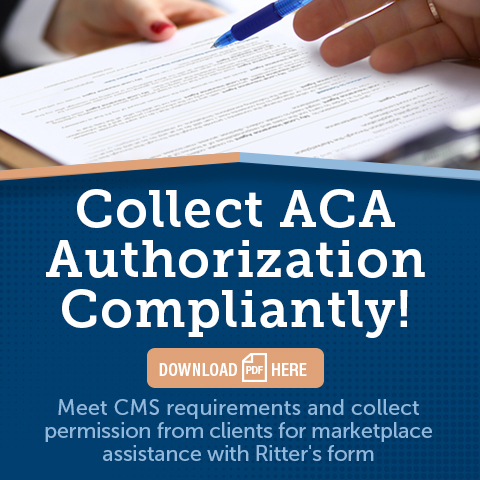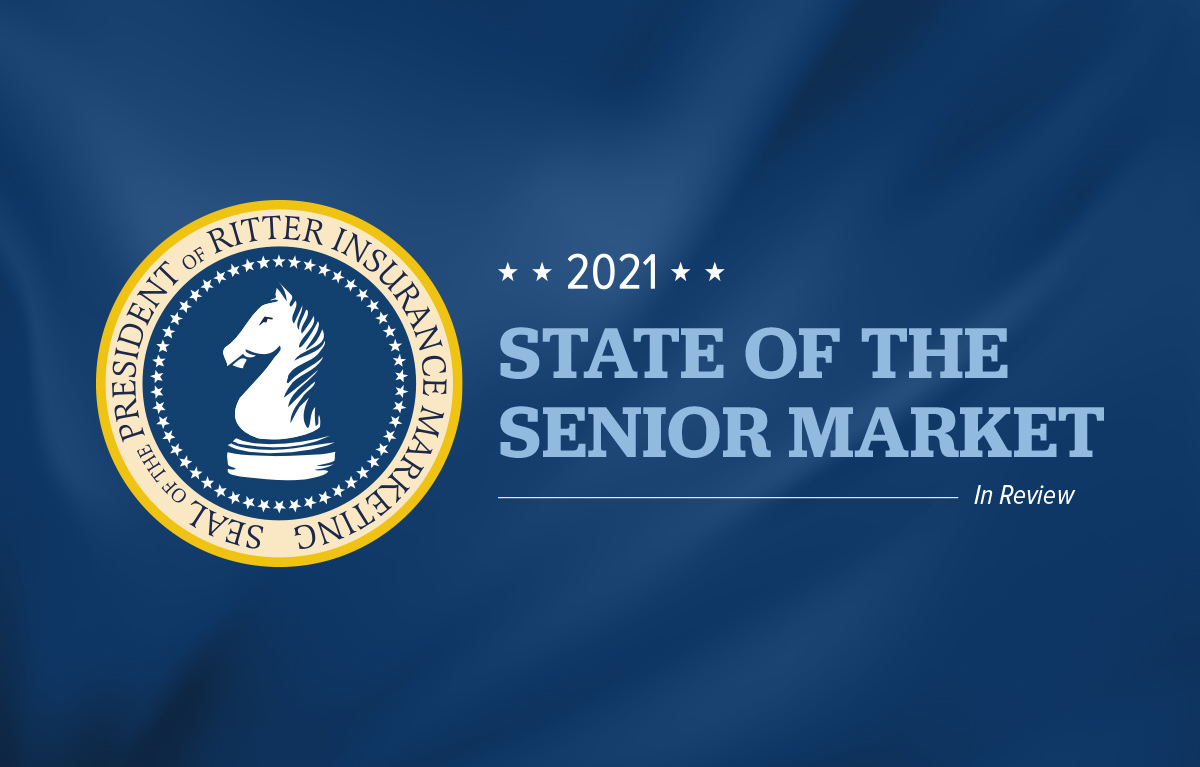As an independent agent, you likely have clients who have trusted you with their health insurance needs for some time, years even. If they’re enrolled in marketplace insurance, don’t abandon them when they age into Medicare.
Selling both marketplace and Medicare insurance plans is an excellent way to help your clients meet their needs and earn more each year!
Listen to this article:
Once your clients approach their Medicare Initial Enrollment Period (IEP), it’s time to help them through the process of transitioning from the marketplace to Medicare. It’s generally wise for clients to enroll in Medicare coverage to reduce health care costs and avoid paying penalties.
This transition doesn’t have to be an intimidating time for clients. With your knowledge, you can help guide them through all the steps of changing plans to ensure they don’t experience any gaps in quality health coverage.
Medicare Basics to Relay to Clients
As your client ages into Medicare, make sure that they’re aware of these basic concepts surrounding eligibility, enrollment, and the basics of the IEP.
Medicare Eligibility & the Basics of IEPs
To be eligible for Medicare, your clients must generally reside in the United States, be approaching their 65th birthday, and be eligible for Social Security retirement cash benefits. U.S. citizens under 65 can qualify for Medicare if they have certain disabilities or have received Social Security Disability Insurance checks for at least 24 months.
Remember, your clients aging into Medicare can enroll in the program a few months before their 65th birthday comes around. Generally, the three months before a client’s birthday, the month of their birthday, and three months following are their IEP period. (There is an exception if your client’s birthday is the first of a month.) These seven months are crucial for clients looking to enroll in Medicare coverage for the first time.
A marketplace plan or insurer is not required to inform individuals when their Medicare IEP is coming. Make sure you’re aware of your client’s 65th birthday and when their IEP begins. Continue to communicate with them when this crucial period is approaching.
A marketplace plan or insurer is not required to inform individuals when their Medicare IEP is coming. Make sure you’re aware of your client’s 65th birthday and when their IEP begins.
There are a few situations where an individual can choose marketplace coverage instead of enrolling in Medicare:
- A client is eligible for premium-free Part A but chooses marketplace coverage. They will not be eligible for any premium subsidies.
- A client is paying a premium for Part A drops Part A and Part B coverage and gets a marketplace plan. In some cases, Part A will be less expensive than a marketplace plan without premium subsidies.
IMPORTANT: If a client enrolls in premium-free Part A, they can’t drop Medicare without also dropping retirement or disability benefits (Social Security or Railroad Retirement Board benefits).
Medicare Premiums
As long as your client is turning 65 and has paid Medicare taxes for 10 years of work, they will be eligible for “premium-free” Medicare Part A. They will also qualify for premium-free Part A if they are eligible for Railroad Retirement benefits or have a spouse that qualifies for premium-free Part A. Most individuals pay a premium for Medicare Part B. In 2022, the standard monthly premium for Part B insurance is $170.10. In 2023, the Part B premium will be $164.90. Some may pay a higher premium based on their income or if they are late to enroll.
Unlike the marketplace, those with Medicare are not eligible for tax credits; however, they may qualify for a low-income subsidy program to help pay for their prescription drugs or a Medicare Dual Eligible Special Needs Plan.
Even though Medicare comes with higher premiums than marketplace coverage, it is illegal for those with Medicare to purchase a marketplace plan to increase their coverages or reduce costs. Additionally, it is illegal for anyone to enroll an individual in a marketplace plan without their prior consent.
Medicare Annual Enrollment Period
When October 15 rolls around, if your client is looking to join, switch, or drop a plan, this is the time to make changes, until December 7. This is the Annual Enrollment Period (AEP) and occurs every year for Medicare enrollees to update their coverages.
Note: Your client may qualify for a Special Enrollment Period (SEP) if they have had a qualifying life event. See when your client can sign up for Medicare
Avoiding Late Enrollment Penalties
To avoid Medicare late enrollment penalties, have your clients select their coverage by the conclusion of their IEP. It’s important to note that late enrollment penalties are added to the monthly premium, are not a one-time late fee, are charged for as long as you have that type of coverage, and increase the longer you wait to sign up.
For most people, these penalties are lifetime penalties because Medicare coverage is the health insurance they will carry for the rest of their lives. To reduce health care costs, make sure your clients are aware of these penalties and when their IEP begins.
Transitioning Your Clients Away from the Marketplace
Once it’s time to transition your clients away from the marketplace, notify their appropriate marketplace at least 14 days before their Medicare coverage begins to let them know your client plans to disenroll from coverage. If possible, request the end date of marketplace coverage be the day before their Medicare plan is set to begin.
If your client’s marketplace plan belongs to the federal marketplace, help them use HealthCare.gov to disenroll from coverage. To select the termination date that works best for your client, call into the Marketplace Call Center. This is the only way to ensure that your client gets the termination date of their choosing. Calling the Call Center is the easiest way to mitigate the potential risk of paying double premiums or being charged a penalty.
In the case that multiple family members are enrolled in the same marketplace policy, but only one client is eligible for Medicare, call the Marketplace Call Center to cancel coverage for a client enrolling in Medicare and to maintain coverage for non-Medicare eligible family members.
What Ritter Recommends
Ritter generally recommends that you transition your clients from a Qualified Health Plan (QHP) to Medicare when they qualify. This is the most affordable option for many clients. We suggest that you do this as promptly as possible, usually within the individual’s IEP. A client may experience coverage gaps and may have to pay premium penalties if they delay enrolling in Medicare.
One of the questions that many marketplace subscribers have is how to ensure they have the same, or similar, coverages with Medicare. The Affordable Care Act (ACA) ensures coverage for 10 basic types of care, including:
- Ambulatory patient services (outpatient care, same-day surgeries, care received without being admitted to a hospital)
- Emergency services
- Hospitalization
- Pregnancy, maternity, and newborn care
- Mental health and substance use disorder services
- Prescription drugs
- Rehabilitative and habilitative services and devices
- Laboratory services
- Preventative, wellness services, and chronic disease management
- Pediatric services (must include vision and dental care)
Some of these services aren’t covered as well with Original Medicare (Parts A and B), like laboratory services or hospitalization coverages, for example. If your client is missing some of the coverages that came with their marketplace plan, consider Medigap coverage, a Medicare Advantage plan, or ancillary products, like hospital indemnity insurance.
If your client is missing some of the coverages that came with their marketplace plan, consider Medigap coverage, a Medicare Advantage plan, or ancillary products, like hospital indemnity insurance.
Build a Strong Medicare Pipeline
In order to maximize your portfolio and reach your diverse client base, we recommend selling both ACA and Medicare products. This is a great way to build what we call a “Medicare pipeline.” When ACA clients age through the marketplace and are ready to transition to Medicare, you’re able to continue serving them!
As the agent of record, we suggest you prepare to guide your clients along through the process of transitioning to Medicare. Your clients are the life of your business, and it’s important to maintain good relationships with them. When you have strong relationships with clients, you’re able to become familiar with their needs and increase your chances of receiving referrals. As clients age out of the marketplace and become Medicare eligible, they can continue to return to you with their questions and concerns.
Not to mention, this ongoing relationship can be a profitable one as well. You can continue to earn Medicare commissions as long as your client is enrolled in Medicare coverage. Check out the most recent maximum broker commissions for Medicare Advantage and Part D
The transition from the marketplace to Medicare can go smoothly for you and your client. With knowledge and awareness of the significant dates along the way, you’re one step closer to securing quality health care coverage for your clients.
In order to complete your portfolio, build your Medicare pipeline, and meet quality leads, register with our site! It’s free, only takes a minute, and gives you free access to resources like our Medicare eBook trilogy!






Share Post